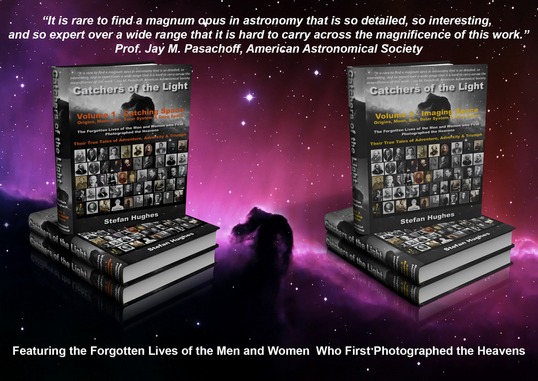'The Rainbow Man'

Born: : 13th February 1845, Leipzig, Germany
Died:14th May 1915, Potsdam, Germany
Wilhelm Oswald Lohse, along with his colleagues Hermann Carl Vogel and Julius Scheiner at the Potsdam Observatory were three of the great pioneers of Photographic Astronomical Spectroscopy. Together they made significant contributions to the then new science of Astrophysics. Lohse was the Chemist who worked with Vogel all his life, providing his friend with the technology to photograph the ‘rainbows of the stars'.
Very little is known about the early life of Wilhelm Oswald Lohse except that he was born on the 13th of February 1845 in the city of Leipzig, the son of a master tailor. He received his elementary education in Leipzig but like Vogel, continued with his secondary education at the Dresden Polytechnic School and then went onto study the University of Leipzig.
Lohse’s most important contribution to Astrophotography was the design and construction of an Astronomical Photographic Camera, which on its completion in 1879 was one of the very earliest of its kind. It was special in that it was a detachable camera and not one permanently fixed to a telescope as for example in the case of a Photoheliograph. Lohse’s camera became one of the best known Astronomical Photographic devices; being described and cited in many works of his time, and proved to be a crucial tool in the development of many new photographic techniques used at the Observatory and elsewhere.
During a ten year period from 1879 to 1889 it is known from his observational notebooks that Lohse took 217 ‘dry’ photographic plates of a variety of astronomical subjects including the Sun, Moon, Planets (Venus, Mars, Jupiter and Saturn), comets, stars, star clusters and nebulae. Lohse plates were taken with the Potsdam Observatory’s then largest telescope, the 12-inch (30-cm) ‘Grosse Rerfraktor’ of Schroder and Repsold; not to be confused with ‘Great Potsdam Double Refractor' which was completed in 1899.
To read more on his life and work and those of Vogel and Scheiner read the eBook chapter on 'The Rainbow Men' or buy the Book 'Catchers of the Light'.

'Great Orion Nebula' (M42), Wilhelm Oswald Lohse, 12-inch refractor, 1889

Buy the eBook or Printed Book at the 'Catchers of the Light' shop.